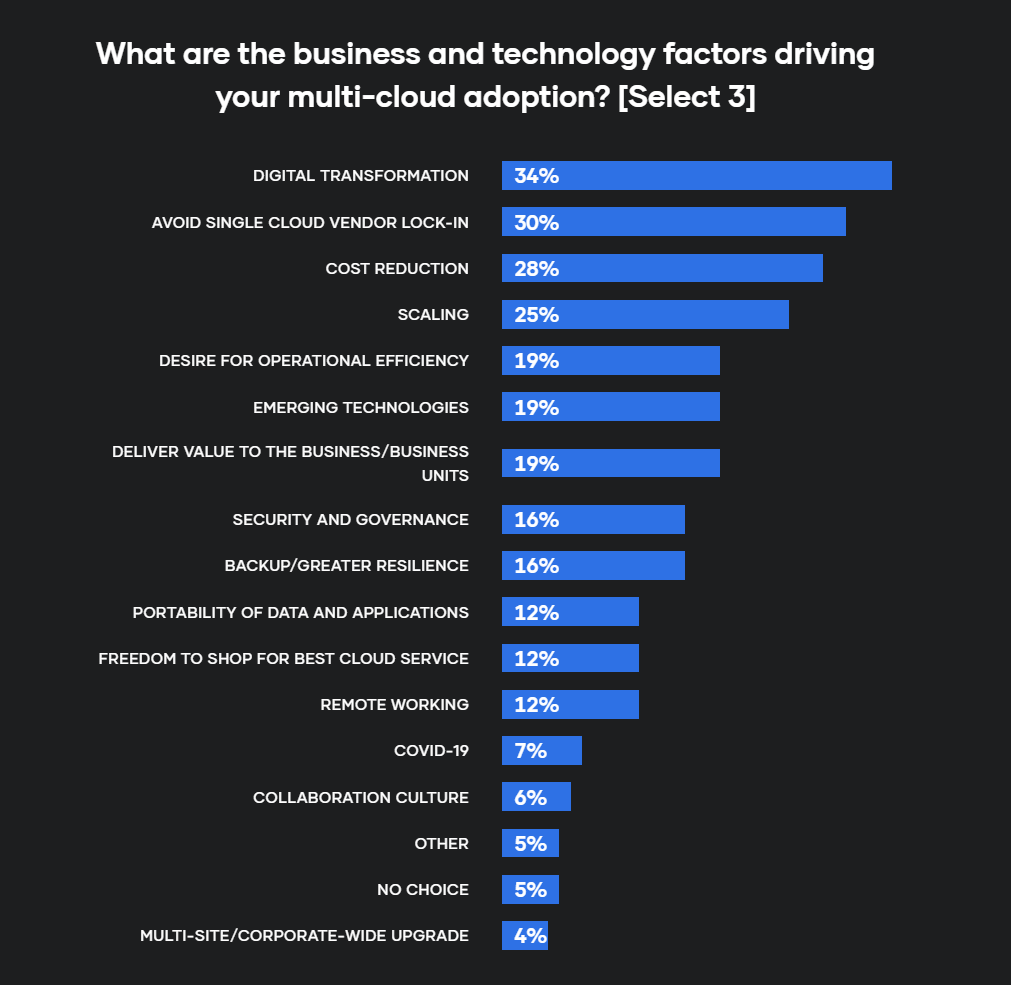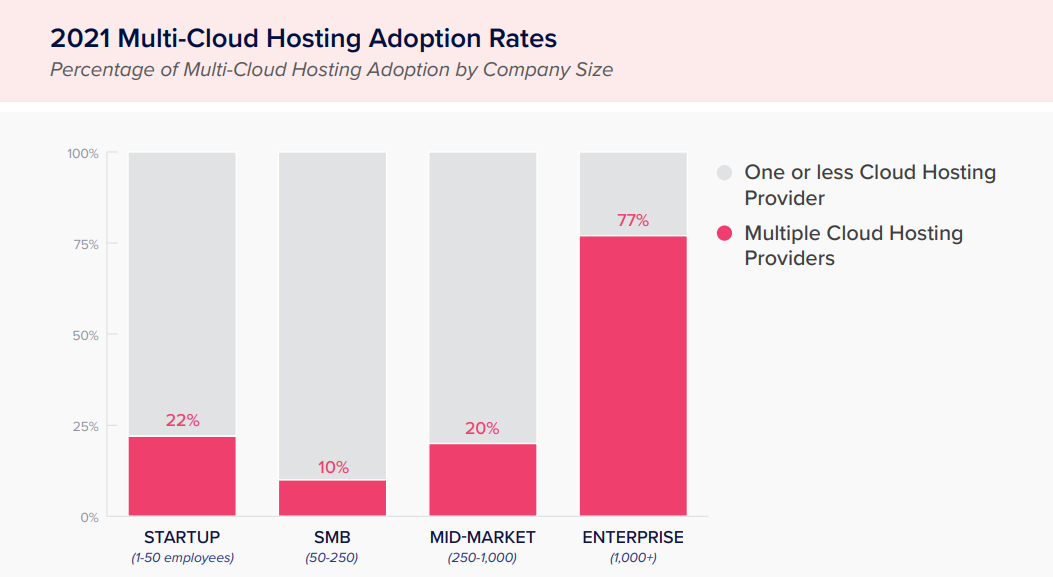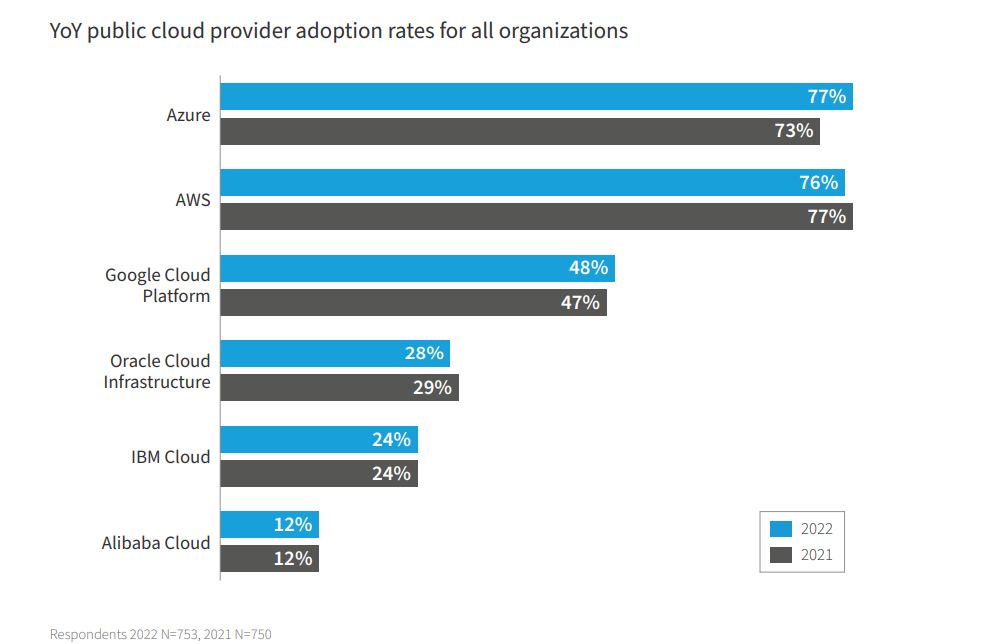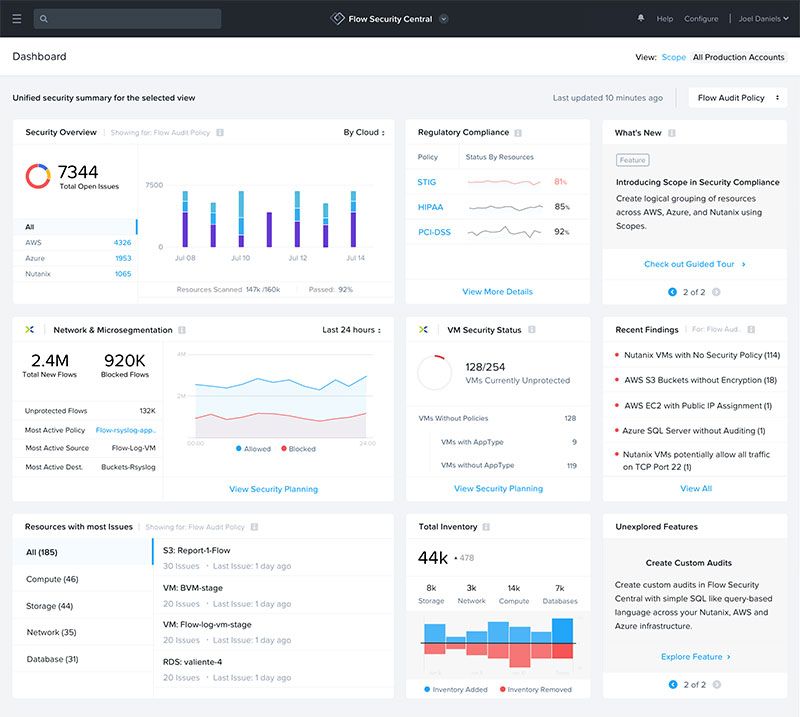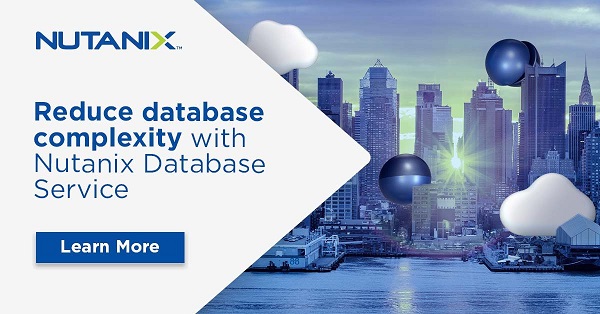Source: Hashicorp
“Most organizations adopt a multicloud strategy out of a desire to avoid vendor lock-in or to take advantage of best-of-breed solutions,” said Michael Warrilow, VP Analyst, Gartner. “We expect that most large organizations will continue to willfully pursue this approach.”
While multicloud deployment is heavily skewed towards enterprises at the moment as Warrilow points out, it’s safe to say startups and SMBs will eventually catch up, going by the rate of growth in implementation.
Source: Intricately
There is a confluence of technology and business trends turning companies toward multicloud environments.
Public Cloud Adoption Keeps Climbing
Public cloud adoption continues unabated on its upward path, as per Flexera’s State of the Cloud report. Over 80% of enterprises spend more than $1 million a year on the public cloud. While that is expected, what’s surprising is, the public cloud bill of more than 50% of SMBs also exceeds $1 million.
It’s becoming more critical to manage multiple workloads – especially PaaS and IaaS – with a cohesive control panel.
Hybrid Cloud Deployments Rising
The term “multicloud” describes a setup that consists of at least two public cloud environments. However, it can also include one or more co-located private clouds, in which case it turns into a hybrid cloud. Technically, that makes the hybrid cloud a type of multicloud.
In the enterprise, however, the lines between hybrid cloud and multicloud are increasingly blurred. That’s because hybrid these days includes multiple workloads running on two or three different public cloud providers on average in addition to on-premises workloads, according to a Cisco report.
That’s not all, there is significant movement of workloads from on-prem to the cloud (and back) for a variety of business reasons that necessitate the segmentation, extension and consolidation of the IT operating model.
“Fifty-eight percent of the respondents are moving workloads between on- and off-premises environments weekly,” said Todd Brannon, Sr. Director, Cloud Platforms Marketing at Cisco.
“This is a faster operational tempo than we expected, and it demonstrates continuous optimization of workload placement is becoming more widely adopted.”
Cloud Service Providers Improve Offerings
Avoiding vendor lock-in is one of the three biggest reasons why companies move to multicloud. But it wouldn’t be totally incorrect to say that the days of vendor lock-in are numbered. Cloud providers are constantly trying to woo each other’s customers with new capabilities, services, support, pricing packages and QoS. The Flexera State of the Cloud report showed that Azure and AWS are evenly matched at the top while Oracle and IBM have made definitive inroads into the market.
Source: Flexera
Organizations now have the ability to choose the right platforms, infrastructure and provider for their cloud workloads and applications. The trend these days is to get the ideal mix of capabilities and cost points that keeps business-critical applications performing at peak capacity.
Cloud is Becoming More Secure
While the public cloud has often been looked down upon as having weaker security than the private cloud, that’s no longer true in every case. Popular cloud vendors have all taken significant steps to ensure the security of hybrid multicloud models as a whole, as opposed to just their cloud. AWS, Microsoft Azure and Google Cloud continue to make strategic acquisitions worth billions of dollars to fortify their cloud service and related offerings.
Further, with multicloud comes the promise of redundancy. Using multiple cloud providers gives the organization backup, failover and disaster recovery (DR) options. If the primary platform fails, business-critical applications can still continue to run and data can still be accessed. In most multicloud implementations, the security plane is offered as a built-in, cloud-native option that works uniformly across all the public cloud instances.
There are also reliable third-party tools such as Nutanix Security Central that provide a centralized, unified approach to security operations in a multicloud deployment. Security Central works on any cloud type, with any data or workload, and automates incident response and analysis as well as regulatory compliance.
Containers are the New Normal
One of the biggest trends in enterprise cloud computing is the use of containers. Docker, Kubernetes and other container technologies make it simpler and faster to build, package, deploy and scale cloud applications by allowing developers to focus on logic and application dependencies while admins take care of deploying and managing applications. Containers also offer better portability of workloads, applications, data and microservices between different clouds, on-prem environments and the edge.
A multicloud environment can facilitate multiple self-contained environments necessary for containers.
Increased mobility, resilience, cost savings and scalability are just few of the benefits that multicloud brings to businesses large and small. Investments (or lack of them) made in cloud technology today will have consequences for the business, both immediate and long term.
CIOs and their IT teams are creating (and reevaluating) well-thought out multicloud strategies to reach their digital transformation, innovation and growth goals.

